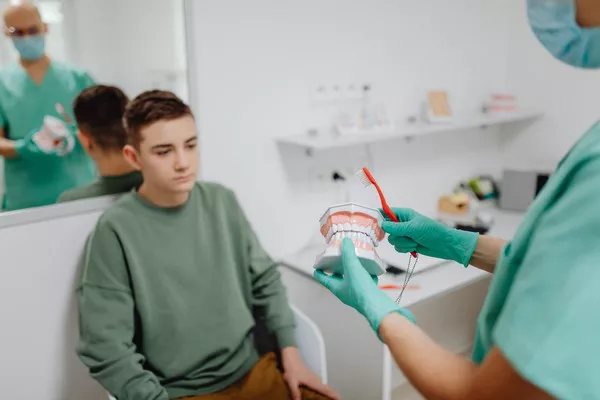Periodontal diseases encompass a spectrum of conditions affecting the gums and supporting structures of the teeth. This article explores the relationship between gingivitis and periodontitis, their typical progression, exceptions to this progression, risk factors, symptoms, diagnosis, prevention, treatment, and the importance of early detection.
Understanding Gum Diseases
Gingivitis is the initial stage of gum disease characterized by inflammation of the gums due to plaque buildup. It is reversible with proper oral hygiene and professional care. Periodontitis, on the other hand, is a more advanced stage where inflammation extends deeper into the supporting tissues, leading to irreversible damage.
Typical Progression
Gingivitis typically precedes periodontitis. Plaque buildup along the gum line triggers an immune response, causing inflammation of the gums (gingivitis). If left untreated, this inflammation can progress deeper into the tissues, affecting the bone and ligaments that support the teeth, resulting in periodontitis.
Exceptions to Progression
While gingivitis often precedes periodontitis, there are exceptions. In some cases, especially among younger individuals, periodontitis can develop without a significant history of gingivitis. This scenario underscores the complexity of periodontal diseases and the variability in how they manifest.
Risk Factors
Several risk factors can contribute to the development of periodontitis independently of gingivitis:
Genetics: Family history of periodontal diseases can increase susceptibility.
Health Conditions: Systemic diseases like diabetes or immune disorders.
Smoking: Tobacco use is a significant risk factor for periodontitis.
Poor Oral Hygiene: Inadequate brushing and flossing habits contribute to plaque accumulation.
Stress: Chronic stress can weaken the immune system, impacting gum health.
See Also: How Much Are Metal Retainers
Symptoms and Diagnosis
Symptoms of periodontitis include:
Gum Recession: Exposing more of the tooth‘s root.
Deep Pockets: Spaces between the gums and teeth deepen.
Loose Teeth: Teeth may become loose or shift.
Gum Bleeding: Especially when brushing or eating.
Diagnosis involves a comprehensive dental examination, including probing depths around the teeth and X-rays to assess bone loss.
Prevention and Treatment
Prevention strategies include:
Regular Dental Visits: Professional cleanings and early detection of gum disease.
Good Oral Hygiene: Brushing twice a day and flossing daily to remove plaque.
Healthy Lifestyle: Avoiding smoking and maintaining a balanced diet.
Treating Periodontitis
Treatment options for periodontitis include:
Scaling and Root Planing: Deep cleaning to remove plaque and tartar from below the gum line.
Medications: Antibiotics or antimicrobial mouth rinses to control bacterial infection.
Surgical Procedures: Flap surgery or bone grafts in advanced cases to regenerate bone and gum tissue.
Importance of Early Detection
Early detection and treatment of periodontitis are crucial to preventing tooth loss and more serious health issues linked to untreated gum disease. Timely intervention can halt disease progression and preserve oral health.
Conclusion
Understanding the dynamics between gingivitis and periodontitis clarifies how gum diseases progress and the potential for periodontitis to develop independently of significant gingivitis. Recognizing risk factors, symptoms, and preventive measures empowers individuals to maintain optimal gum health. By prioritizing regular dental check-ups and adopting good oral hygiene practices, individuals can mitigate the risk of periodontitis and its associated complications, promoting long-term oral health and well-being.
You Might Be Interested In































